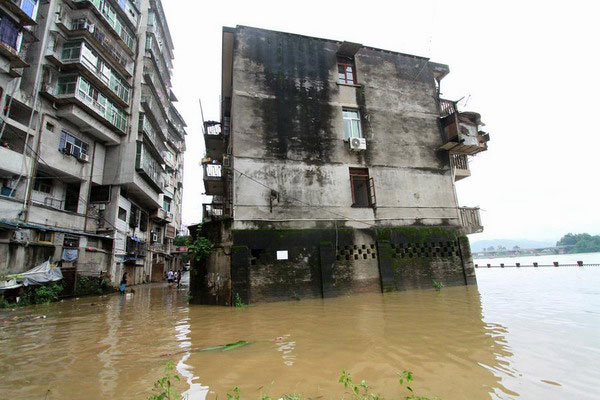 |
|
The bottom of a residential building is flooded in downtown Shunchang county, Nanping city, Fujian province, July 3, 2015. [Photo/Xinhua] |
China's flood control authorities are warning of possible big floods this summer as weather and hydrologic factors closely resemble those of 1998, when floods killed at least 3,000 people nationwide.
Because of the strong El Nino phenomenon - an oscillating band of warm surface water in the ocean - there is a strong possibility that floods will hit the middle and lower reaches of the Yangtze River, according to Liu Ning, vice-minister of water resources, at a meeting on Thursday in Wuhan, Hubei province.
The Yangtze is China's longest river and the world's third-longest. Massive floods ravaged the river and its basin areas in 1998, claiming thousands of lives, and El Nino was blamed. Liu said the ongoing strong El Nino, which started in September 2014 and is expected to end in May, has been the longest lasting and strongest oscillation since 1951.
"It is very similar to the one that caused big floods in 1998," Liu said.
Because of a larger amount of rainfall in the spring compared with previous years, some regions along the river entered flood season early, according to the Yangtze River Flood Control and Drought Relief Headquarters. Usually, the flood season starts in April and lasts until October each year.
In addition, the water level along some branches - the Xiangjiang and Ganjiang rivers, for example - rose above the warning line in March.
Predictions from the Meteorological Center for the Yangtze River showed that, with the strong El Nino, rainfall in the middle and lower reaches of the river will increase by 10 to 50 percent in May. From June to August, the major flood season, rainfall in parts of the middle reaches will rise by 50 to 80 percent.
To cope with possible major floods, flood control authorities are asking government agencies to make detailed plans for disaster prevention and relief. Other measures include monitoring ground saturation and weather closely and preparing for possible torrents and typhoons.
